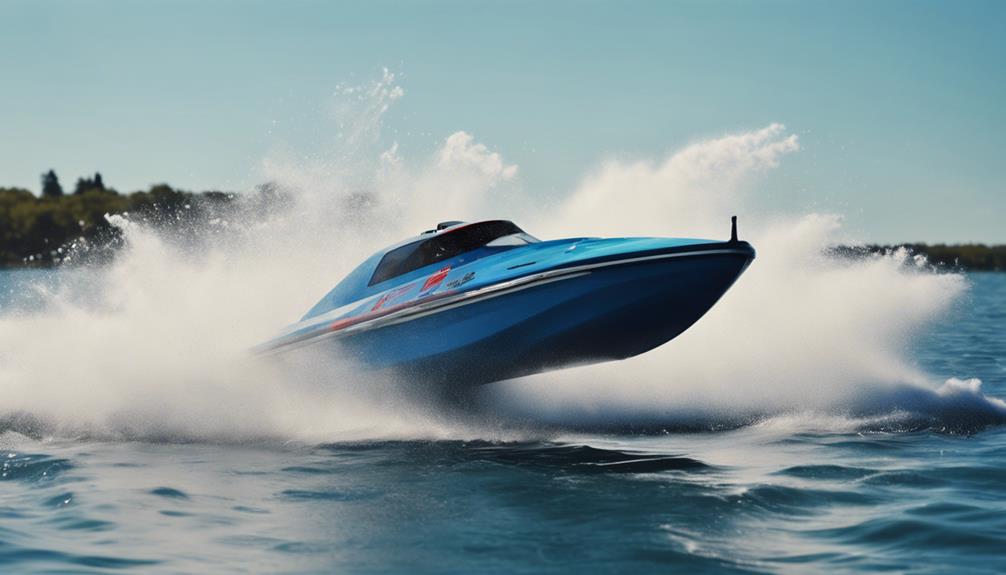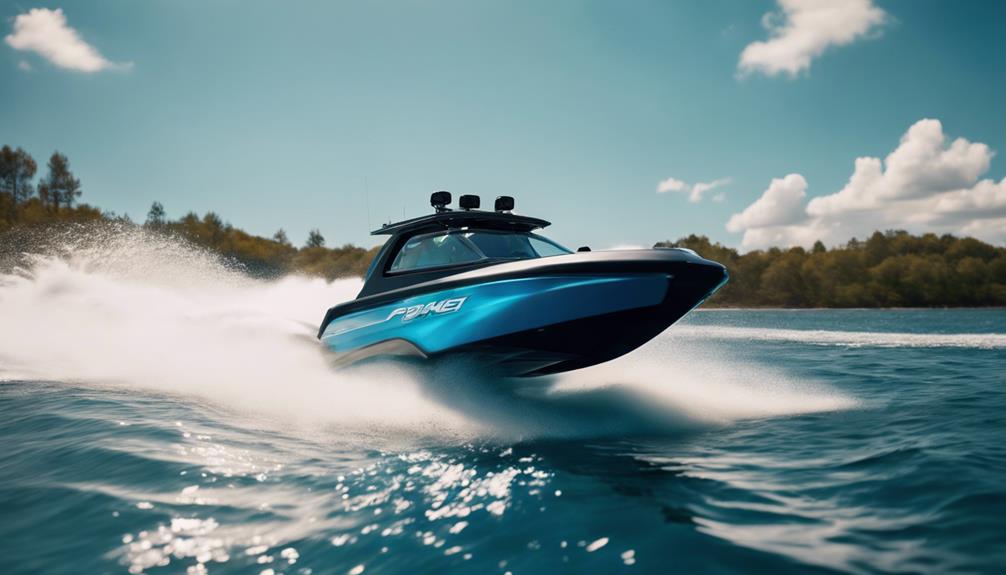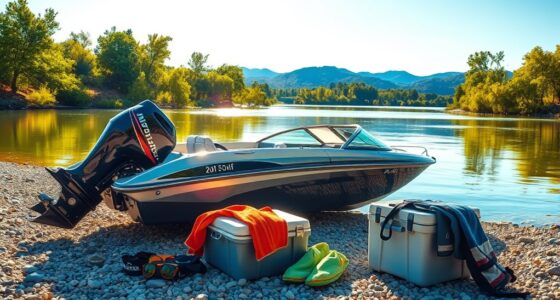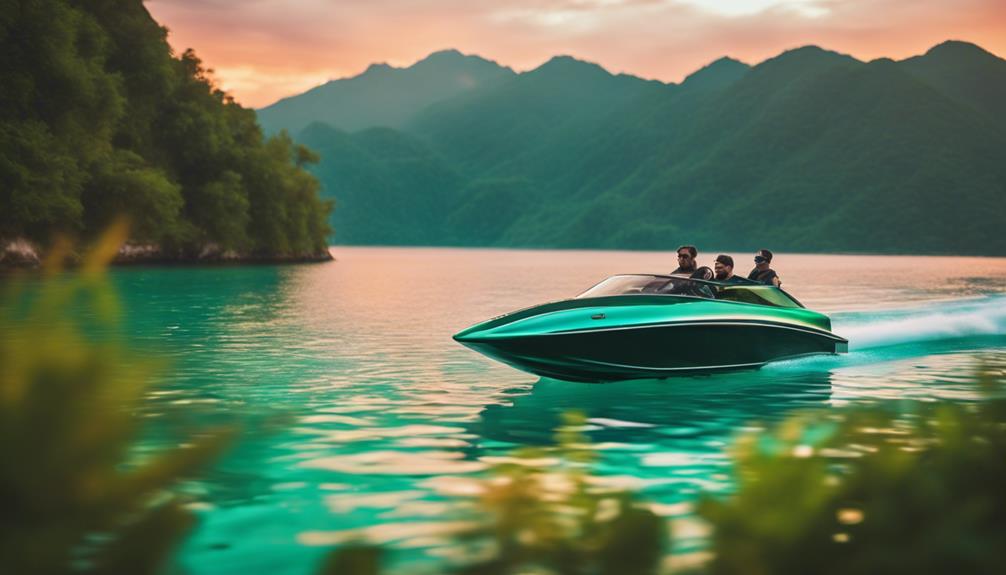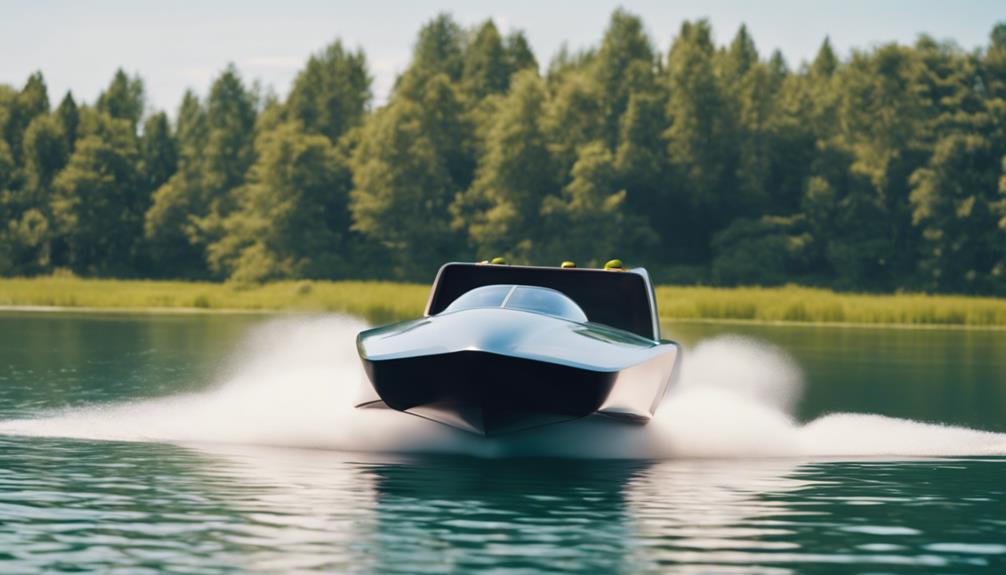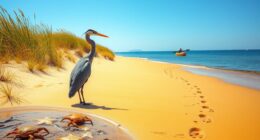Your jet boat may porpoise due to improper hull design or trim settings, leading to an uncomfortable bouncing effect. This often happens at speeds above 4,000 RPM, especially with a rear-heavy load. To reduce porpoising, adjust the trim tabs and set your ride plate angle between 2.5 to 3 degrees upward. Make sure to evenly distribute weight by moving heavier items to the front and adjusting passenger seating. Regularly check your hull's performance and monitor RPM changes. By making these adjustments, you can enhance stability and comfort, and there are more tips to help fine-tune your boat's performance.
Key Takeaways
- Porpoising often results from improper trim adjustments; lowering the trim can help stabilize the ride.
- Check for hull design flaws or excessive rocker, which can cause bow elevation and instability.
- Ensure weight distribution is balanced; relocating heavy items forward can reduce porpoising effects.
- Regularly inspect and adjust trim tabs and ride plate angle for optimal hull performance.
Understanding Porpoising
Porpoising frequently occurs when a jet boat's hull isn't properly tuned for speed, causing it to bounce out of the water. This bouncy behavior can be unsettling and compromise your ride comfort. Understanding porpoising is vital for any jet boat owner, as it often stems from how your boat's components interact with each other.
Adjustments to trim tabs and the ride plate play a significant role in stabilizing your jet boat. If these elements are misaligned or not set correctly, you'll likely experience porpoising at certain speeds. The hull's design also greatly influences its performance; a well-tuned hull minimizes the chances of bouncing.
It's essential to recognize that porpoising isn't exclusive to jet boats, but understanding the specific dynamics of your vessel can help you address the issue effectively. By regularly checking and tuning your trim tabs and ride plate, you can greatly reduce the likelihood of porpoising.
Always keep an eye on weight distribution as well, since it affects how your boat rides through the water. Taking these steps can lead to a smoother, more enjoyable ride.
Common Causes of Porpoising
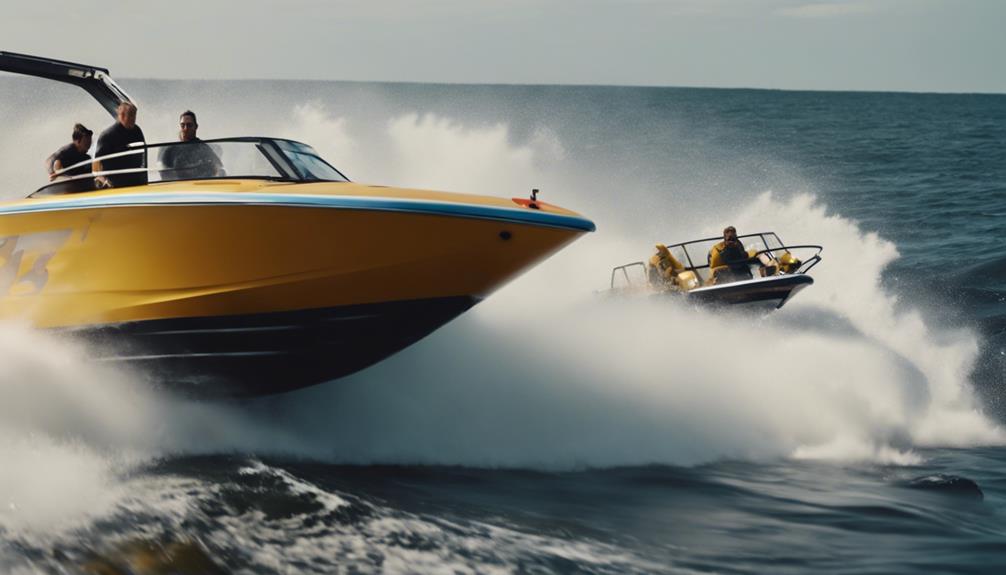
Commonly, jet boats experience porpoising due to a combination of hull design flaws and improper trim adjustments. This bouncing effect often occurs at higher speeds, particularly above 4,000 RPM. One key factor is the rocker in the bottom of the boat, which can destabilize the ride by causing the bow to rise too high, resulting in that annoying bouncing motion on the water.
Weight distribution also plays an essential role in porpoising. If you have heavier passengers sitting at the rear, it can exacerbate the issue, so it's important to balance the weight effectively throughout the boat. Additionally, misalignment of critical components like trim tabs, the ride plate, and the diverter nozzle can greatly impact your boat's handling characteristics, contributing to porpoising.
To help mitigate these problems, you'll want to pay attention to your trim settings and the ride plate angle. Raising the ride plate to a slight upward angle can help reduce tendencies to porpoise. By addressing these common causes, you can enhance your jet boat's performance and enjoy a smoother ride on the water.
Adjustments for Improvement

Making precise adjustments to your jet boat can greatly improve its performance and reduce porpoising.
First, consider adjusting the trim settings. Lowering the trim generally helps decrease porpoising, but find the ideal setting as it varies by your boat model and speed. Aim for a ride plate angle between 2.5 to 3 degrees up from a flat surface to maintain stability while enhancing performance.
Next, check the positioning of the loader and diverter nozzle. Proper water flow management is essential; misalignment can lead to increased porpoising. Regularly monitor RPM fluctuations during testing to assess how effective your adjustments are.
Additionally, examine the weight distribution in your boat. If the weight is too far back, it can exacerbate porpoising. You may want to adjust the weight by relocating gas tanks or heavier gear towards the front. This shift can stabilize the ride considerably.
Weight Distribution Strategies
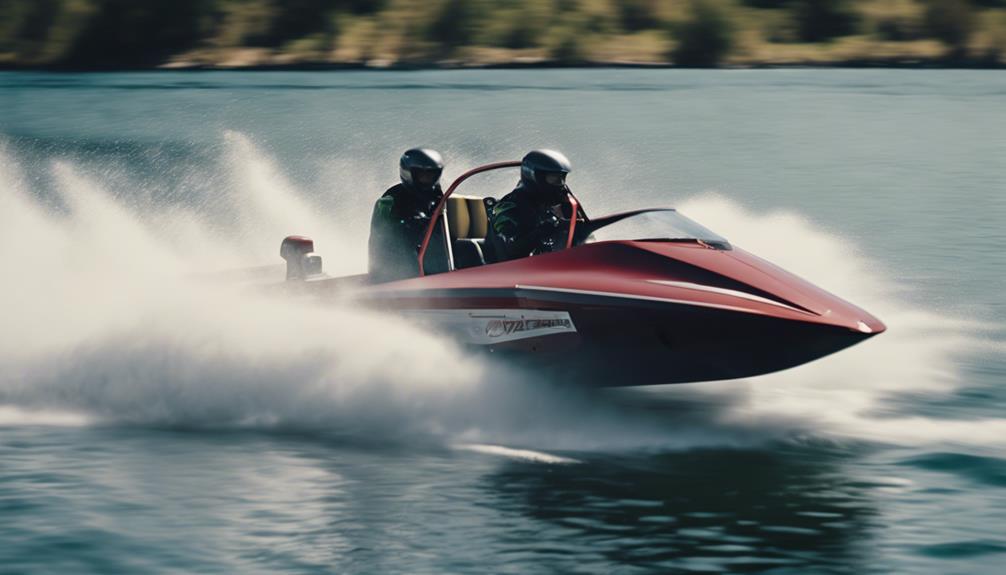
To effectively minimize porpoising, you'll want to focus on maximizing weight distribution throughout your jet boat. Start by evaluating your gear load; verify that it's evenly distributed to maintain a balanced ride.
Heavier items, like anchors and toolbox equipment, should be placed towards the front of the boat. This counterbalances lighter loads in the rear, reducing the chances of uneven riding and subsequent porpoising.
When it comes to passenger seating, consider the weight of your guests. Position heavier passengers towards the front of the boat to enhance stability and further decrease porpoising tendencies. You can also adjust the seating arrangement based on who's onboard, verifying that the overall weight distribution remains ideal.
Lastly, don't forget to move movable weights, such as gas tanks, forward when necessary. Every little adjustment can make a significant difference in achieving a smoother ride.
Testing and Monitoring Performance
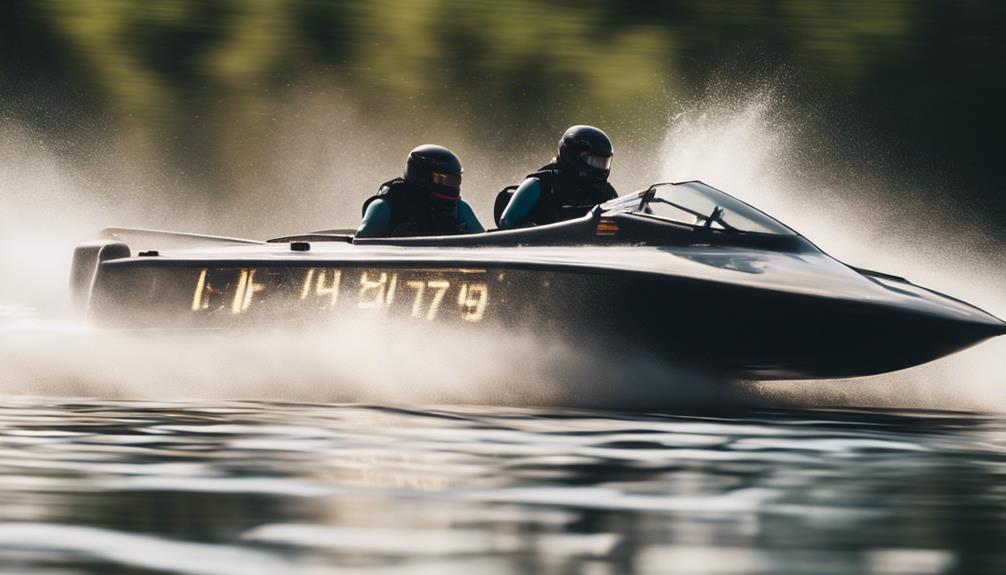
Testing your jet boat's performance after adjustments is essential for understanding how changes impact porpoising behavior at various speeds. Start by conducting water tests to evaluate how the hull interacts with the water. It's important to monitor RPM fluctuations during these tests. This helps you grasp how trim and throttle adjustments affect porpoising dynamics.
While operating your jet boat, pay attention to the hull's water break points. These are significant in identifying specific conditions that may worsen porpoising issues. Make sure you record and compare performance data from multiple tests. This will allow you to refine your tuning and achieve ideal handling characteristics.
Additionally, evaluate the effects of weight distribution and passenger positioning during your tests. These factors can greatly influence porpoising tendencies, so it's essential to assess them carefully.
Frequently Asked Questions
How to Stop a Jet Boat From Porpoising?
To stop your jet boat from porpoising, adjust the trim angle down, redistribute weight towards the front, check the motor height, and consider installing trim tabs for better control and stability while cruising.
What Causes Your Boat to Porpoise?
You're cruising, feeling the thrill, when suddenly your boat starts bouncing. That porpoising can stem from uneven weight distribution, hull design, or improper trim settings, making your ride less enjoyable than it should be.
How to Fix Boat Porpoising?
To fix boat porpoising, adjust the ride plate angle, guarantee proper weight distribution, check trim settings, and inspect cavitation plates. Regularly test after adjustments to monitor improvements and find the best performance for your boat.
Why Is My Boat Bouncing up and Down?
Your boat's bouncing like a pogo stick, right? It's likely due to improper weight distribution, hull design, or trim angle. Tweak those factors, and you'll smooth out your ride in no time!
Could a Jet Boat Not Starting Cause Porpoising Issues?
When experiencing porpoising issues, it’s essential to consider the possibility of a troubleshooting jet boat starting issue. A jet boat not starting can cause performance problems, including porpoising. Ensure that the starting system is functioning correctly to eliminate potential causes of porpoising while operating the boat.
Conclusion
To sum up, solving your jet boat's porpoising problem can greatly enhance your experience on the water.
By understanding the causes, making necessary adjustments, and balancing weight, you'll enjoy smoother sailing.
Stay savvy and systematically test your setup to monitor performance.
Remember, a little effort can lead to a lot of fun!
So, take the time to tackle those troubles, and you'll soon be gliding gracefully over the waves with confidence and control.

